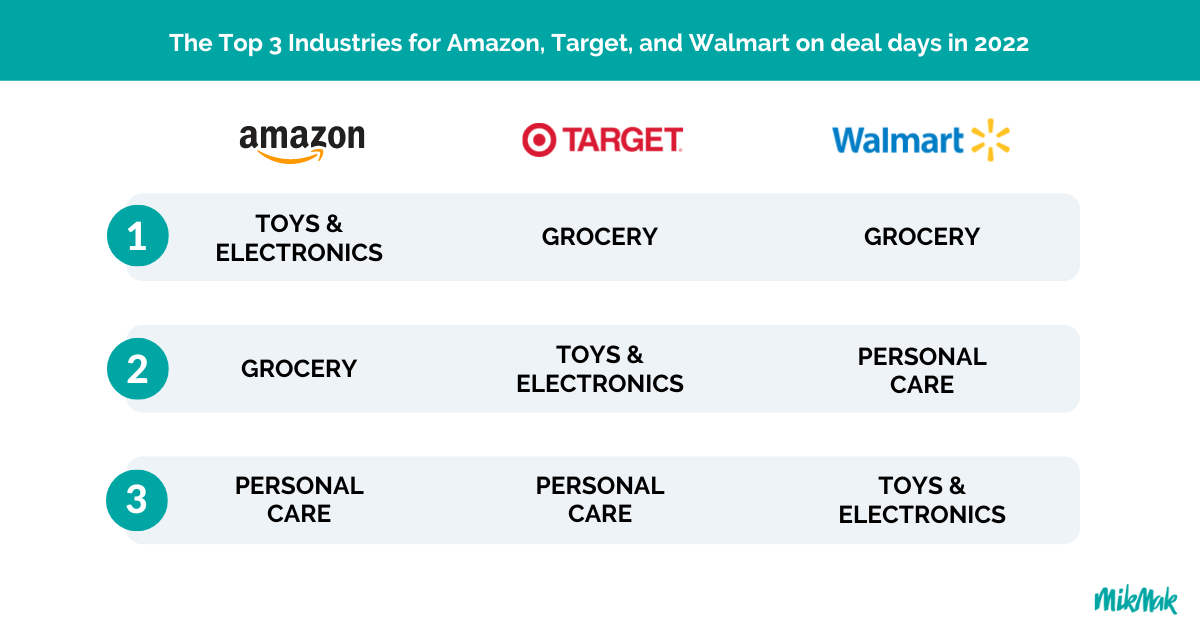
This year was another record-breaker for retailer-driven shopping occasions. For example, Amazon announced that last week’s Prime Day event was their “biggest ever,” with more than 300 million items purchased (roughly 50 million more than last year).
With people purchasing everything from big electronics to basic home essentials, it is clear that these retailer-driven shopping occasions have earned their spot on consumers’ calendars alongside major retail events such as Black Friday and Cyber Monday. Let’s take a closer look at how this year played out, and what that means for the future.
2022 was the year of livestreaming for Amazon Prime Day
Since Prime Day began in 2015, we have seen a vast array of advertisements for the event from Amazon, ranging from banners on their website to Taylor Swift-headlined concerts. This year, Amazon made noise by leveraging influencer marketing and livestream shopping, enlisting thousands of influencers for their Amazon Live Prime Day stream series.
This strategy lines up well with current consumer trends. In fact, MikMak’s Shopping Index shows that shoppers who check out on Amazon tend to come from Facebook (31 percent of traffic) and Instagram (29 percent of traffic), indicating that social media certainly has a good hold on the attention of Amazon shoppers. Furthermore, New York Magazine revealed in a survey that 80 percent of audiences would rather watch a livestream video over reading written content.
Amazon’s strategy paid off, as their streams reached over 100 million views in just two days. Since Amazon saw such success using livestream commerce this Prime Day, it is likely we will see more of this from other retailers in the near future.
Consumers favored the necessities over major indulgences
Given the current economic climate, consumer shopping behaviors have shifted accordingly. On a recent episode of The BRAVE COMMERCE Podcast, Moët Hennessy’s Seth Kauffman explained that currently, people are “scrimping to splurge”, or saving money and holding off on certain purchases to spend more on other things. This year’s retailer-driven shopping occasion results aligned with this idea. The MikMak Shopping Index indicated similar consumer demand and conversion rates to Prime Day weekends in prior years, proving that shoppers did in fact wait and save to “splurge on” the items they wanted.
Additionally, people were investing in more home essentials rather than higher-ticket or luxury goods. Home care products had a purchase intent rate of 19.4 percent during the event days, which is 4 x the category benchmark of 4.9 percent. Amazon drove the most purchase intent clicks in the home care category, with 51 percent of shoppers buying these items on Prime Day (in comparison to 22 percent at Target and 21 percent at Walmart). Beauty brands also saw higher than average activity with 19.3 percent purchase intent rates (1.5 x the category benchmark)..png?width=1200&name=2022%20Prime%20Day%20Chart%20(1).png)
Toys & electronics, grocery, and personal care were the most popular categories across retailers
With many toys & electronics on sale for Prime Day, it is typical that these items drive high purchase intent amongst consumers. This year, the category drove the most purchase intent clicks for Amazon once again. The second and third most purchase intent clicks were for grocery and personal care products respectively, both categories that were not listed in the top 3 last year.
Other major retailers had slightly different top performers. Grocery was number one at Target during their three-day Deal Days event, toys & electronics came second, and personal care was third. Walmart also saw grocery drive the most purchase intent, but had personal care come in second, and toys & electronics third.

Use last week as an indicator of shopping behaviors to come
This July’s retailer-driven shopping occasions are only the beginning of the numerous deal-driven events we’ll have in 2022. Between back-to-school sales, a potential second Prime Day in fall, and the holiday season after that, the trends we’re seeing now can help brands prepare. Be sure to take a close look at how your brand specifically performed this year to inform upcoming inventory needs and marketing campaigns.
Want to be able to access insights like these for your brand? With MikMak, you can understand your consumers’ online behavior across platforms, retailers, and campaigns to increase purchase consideration from your shoppers. To learn more, schedule a demo today.


